
Dijon: The Heart of Burgundy's Rich Heritage
Discover Dijon, a charming city in the heart of Burgundy, where history, culture, and gastronomy create an unforgettable experience for every visitor.
Dijon, the capital of the Burgundy region in France, is a city that effortlessly marries history, culture, and gastronomy. Famous for its mustard, Dijon offers far more than this culinary delight. Walking through its winding streets, you'll find a harmonious blend of medieval and Renaissance architecture, each corner whispering tales of the past. The city’s rich history is evident in its well-preserved buildings and monuments, such as the Palace of the Dukes of Burgundy, which now houses the Musée des Beaux-Arts. This museum stands as one of France's oldest and most prestigious art museums, showcasing an impressive collection from the Middle Ages to modern times. Dijon is also an ideal destination for food lovers. The city is a part of the Route des Grands Crus, a world-famous wine trail. Here, you can indulge in some of the finest Burgundy wines, paired perfectly with local delicacies. The bustling Les Halles Market, designed by Gustave Eiffel, is a must-visit for fresh produce, cheeses, and, of course, Dijon mustard. The city’s vibrant culinary scene is reflected in its numerous Michelin-starred restaurants where you can savor traditional French cuisine. Not only is Dijon a feast for the palate, but it also offers a visual treat. The Owl’s Trail, a fascinating walking route marked by owl plaques, guides visitors through the city’s key historical sites and hidden gems. This self-guided tour is perfect for those who want to explore at their own pace. Whether you’re an art enthusiast, a history buff, or a foodie, Dijon promises an enriching and memorable experience.
Local tips in Dijon
- Visit the Palace of the Dukes of Burgundy for a dose of history and to see one of France’s oldest art museums.
- Don’t miss the Les Halles Market, especially on market days, to experience local flavors and fresh produce.
- Take the Owl’s Trail walking tour to explore Dijon’s historical sites and hidden gems at your own pace.
- Try the local Burgundy wines and pair them with regional specialties for a true taste of Dijon.
- Visit during the International Gastronomy Fair in November for a unique culinary experience.
Neighbourhoods in Dijon
Dijon: The Heart of Burgundy's Rich Heritage
Dijon, the capital of the Burgundy region in France, is a city that effortlessly marries history, culture, and gastronomy. Famous for its mustard, Dijon offers far more than this culinary delight. Walking through its winding streets, you'll find a harmonious blend of medieval and Renaissance architecture, each corner whispering tales of the past. The city’s rich history is evident in its well-preserved buildings and monuments, such as the Palace of the Dukes of Burgundy, which now houses the Musée des Beaux-Arts. This museum stands as one of France's oldest and most prestigious art museums, showcasing an impressive collection from the Middle Ages to modern times. Dijon is also an ideal destination for food lovers. The city is a part of the Route des Grands Crus, a world-famous wine trail. Here, you can indulge in some of the finest Burgundy wines, paired perfectly with local delicacies. The bustling Les Halles Market, designed by Gustave Eiffel, is a must-visit for fresh produce, cheeses, and, of course, Dijon mustard. The city’s vibrant culinary scene is reflected in its numerous Michelin-starred restaurants where you can savor traditional French cuisine. Not only is Dijon a feast for the palate, but it also offers a visual treat. The Owl’s Trail, a fascinating walking route marked by owl plaques, guides visitors through the city’s key historical sites and hidden gems. This self-guided tour is perfect for those who want to explore at their own pace. Whether you’re an art enthusiast, a history buff, or a foodie, Dijon promises an enriching and memorable experience.
When is the best time to go to Dijon?
Iconic landmarks you can’t miss
Darcy Garden
Discover the peaceful elegance of Darcy Garden, a stunning urban park in Dijon, perfect for relaxation and exploration amidst nature's beauty.

Museum of Fine Arts Dijon
Explore the rich artistic heritage of France at the Museum of Fine Arts Dijon, featuring stunning works from renowned European artists.

Dijon central indoor market hall
Discover the vibrant flavors of Dijon at the Central Indoor Market Hall, a culinary hub filled with fresh produce and local delicacies.

Arquebuse Botanical Garden
Experience the tranquility of Arquebuse Botanical Garden in Dijon, a lush retreat featuring diverse flora, serene pathways, and educational exhibits.

Darcy square
Discover the charm of Darcy Square in Dijon, a lush city park perfect for relaxation and cultural exploration amidst stunning architecture.

Cathédrale Saint-Bénigne de Dijon
Explore the stunning Cathédrale Saint-Bénigne de Dijon, a Gothic masterpiece rich in history and architectural grandeur in the heart of Dijon.

Liberation Square
Explore the enchanting Liberation Square in Dijon, a historical plaza surrounded by stunning architecture, cafes, and vibrant local culture.
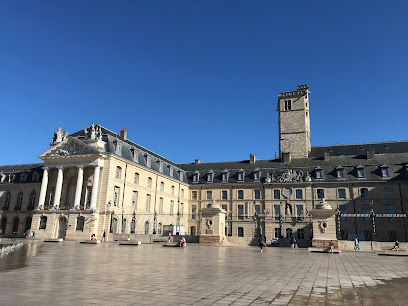
Palais des Ducs et des États de Bourgogne
Discover the historical majesty of Palais des Ducs et des États de Bourgogne, a cultural gem in Dijon, France, rich in art and heritage.

Grand Hôtel La Cloche Dijon - MGallery
Experience luxury and history at Grand Hôtel La Cloche Dijon, a five-star hotel in the heart of Burgundy's culinary and cultural capital.

The Owl of Dijon
Uncover the secrets of Dijon with the iconic Owl, a symbol of good fortune and a gateway to the city's rich history and culture.
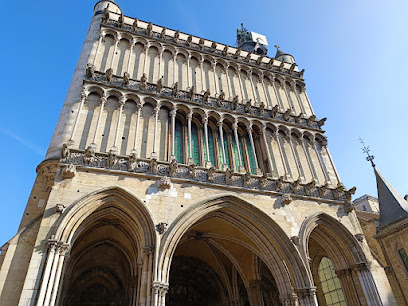
Museum of Burgundian Life
Explore the rich cultural heritage of Burgundy at the Museum of Burgundian Life in Dijon, showcasing local history, traditions, and artistic crafts.
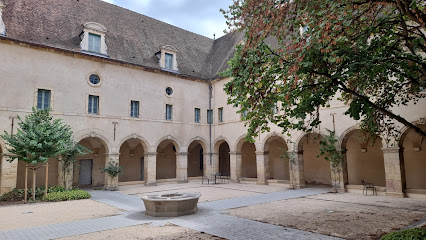
Church of Our Lady
Discover the architectural beauty and serene atmosphere of the Church of Our Lady, a historic gem in the heart of Dijon, France.

Palais des Sports de Dijon
Discover the vibrant atmosphere of Palais des Sports de Dijon, a premier sports complex hosting thrilling events and unforgettable concerts.
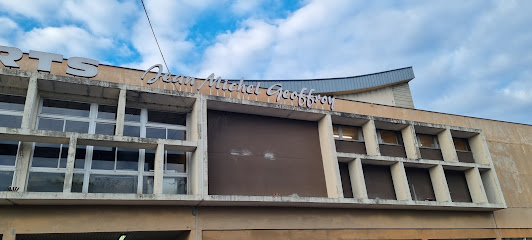
William Gate
Explore the historical beauty of William Gate in Dijon, a monumental landmark that captures the essence of the city's rich heritage.

Natural History Museum
Explore the fascinating world of natural history at the Dijon Natural History Museum, featuring diverse exhibits and educational experiences for all ages.
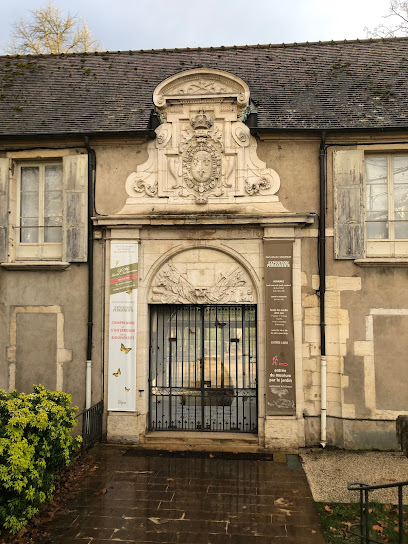
Unmissable attractions to see
Hôtel-Dieu Museum - Hospices de Beaune
Discover the stunning Hôtel-Dieu Museum in Beaune, a cultural landmark showcasing the rich history of healthcare and exquisite Gothic architecture.

Colombière Park
Experience the tranquility and beauty of Colombière Park in Dijon, a perfect blend of nature, recreation, and cultural events.

Museum of Fine Arts Dijon
Explore centuries of artistic brilliance at the Museum of Fine Arts in Dijon, housed in the stunning Palais des Ducs et des États de Bourgogne.

Halles centrales et marché central
Explore Halles Centrales in Dijon - a vibrant market featuring local produce, gourmet foods, and the culinary delights of Burgundy.

Clos de Vougeot Castle
Experience the rich heritage and breathtaking vineyards at Clos de Vougeot Castle, a historic gem in the heart of Burgundy, France.

Arquebuse Botanical Garden
Explore the enchanting Arquebuse Botanical Garden in Dijon, a serene retreat showcasing a diverse collection of flora and beautiful landscapes.

La Moutarderie Fallot
Experience the art of mustard-making at La Moutarderie Fallot, a culinary gem in Beaune, France, renowned for its exquisite Dijon mustard.

Château de Châteauneuf
Explore the enchanting Château de Châteauneuf, a medieval gem in Burgundy, offering stunning views and rich history for every traveler.
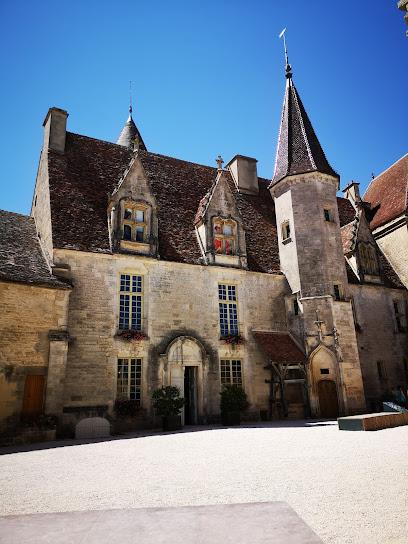
Darcy square
Explore the serene beauty of Darcy Square in Dijon, a charming city park perfect for relaxation, strolls, and cultural experiences.

Cathédrale Saint-Bénigne de Dijon
Discover the stunning Cathédrale Saint-Bénigne de Dijon, a masterpiece of Gothic architecture in the heart of France's historic Burgundy region.

Palais des Ducs et des États de Bourgogne
Explore the grandeur of Palais des Ducs et des États de Bourgogne, a historical landmark in Dijon filled with rich culture, art, and stunning architecture.

The Owl of Dijon
Explore the historic Owl of Dijon, a captivating symbol of the city that invites tourists to uncover its rich heritage and charming surroundings.

Museum of Burgundian Life
Explore the rich cultural heritage of Burgundy at the Museum of Burgundian Life in Dijon, where history and tradition come to life.

Church of Our Lady
Discover the stunning Gothic architecture and rich history of the Church of Our Lady in Dijon, a must-visit spiritual and cultural landmark.

William Gate
Discover the historic William Gate in Dijon, a stunning landmark that showcases medieval architecture and the rich history of the region.

Essential places to dine
Édito Restaurant Dijon
Experience the authentic flavors of Burgundy at Édito Restaurant Dijon—where tradition meets modern cuisine in an inviting brasserie setting.

Les Fils à Maman Dijon
Experience the essence of French comfort food at Les Fils à Maman Dijon, where nostalgia meets modern dining in a cozy atmosphere.

Restaurant Chez Léon
Experience authentic French cuisine at Restaurant Chez Léon in Dijon – where every meal is a celebration of flavor and tradition.

Le Pré aux Clercs
Discover Le Pré aux Clercs in Dijon: A delightful French brasserie offering authentic cuisine and a warm atmosphere in the heart of Burgundy.

L'Alsacien Dijon
Experience authentic Alsatian cuisine at L'Alsacien Dijon - indulge in flammekueche and local wines in a cozy French setting.

La Bourgogne
Discover the flavors of France at La Bourgogne - A delightful brasserie in Dijon serving traditional dishes and fine local wines.

Le Coin Caché
Discover exquisite French cuisine at Le Coin Caché, an elegant fine dining restaurant in the heart of Dijon offering a memorable culinary experience.

Chez Septime
Discover the essence of French cuisine at Chez Septime in Dijon - where every dish tells a story.

L'BOUT D' LA RUE
Discover authentic French cuisine at L'BOUT D' LA RUE in Dijon - where tradition meets innovation.
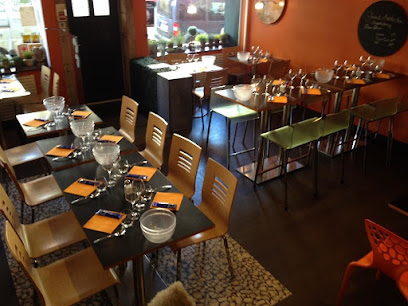
Maison Millière - Restaurant Boutique Bar à vin et Salon de thé
Experience authentic French cuisine and delightful teas at Maison Millière in the heart of Dijon – where every meal is a celebration.

Restaurant Jaipur
Discover authentic Indian flavors at Restaurant Jaipur in Dijon - a culinary journey through spices and traditions.
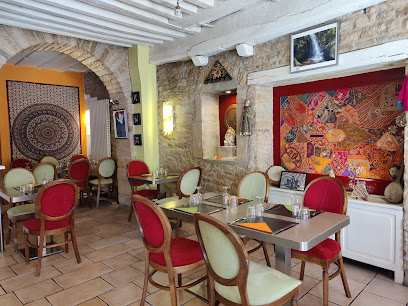
L'Essentiel
Discover exquisite haute French cuisine at L'Essentiel in Dijon - where every meal is a celebration of flavor and artistry.

Le Concept
Experience modern French cuisine at Le Concept in Dijon—where exquisite flavors meet local charm in a delightful dining atmosphere.

Bar Brasserie restaurant Au Grand Café Dijon
Experience authentic French cuisine and vibrant atmosphere at Au Grand Café Dijon – your perfect dining destination in Burgundy.

Loiseau des Ducs
Experience the pinnacle of French haute cuisine at Loiseau des Ducs in Dijon - where tradition meets innovation on every plate.

Markets, malls and hidden boutiques
La Toison d'or
Discover La Toison d'Or in Dijon - a shopping mall offering luxury brands, popular retailers, and diverse dining options for an unforgettable retail experience.

Primark
Explore affordable fashion and limitless style at Primark in Dijon, a top shopping destination in the Centre Commercial Toison d'Or.

Galeries Lafayette
Explore Galeries Lafayette in Dijon: a premier shopping destination offering luxury fashion, beauty, and local craftsmanship in a stunning architectural setting.

La Moutarderie Fallot - Boutique Atelier Dijon
Experience the art of mustard-making at La Moutarderie Fallot, a culinary gem in Dijon, France, where tradition and flavor come together.

Maille Dijon mustard
Experience the rich flavors of France at Maille Dijon mustard shop, a gourmet grocery store offering a delightful selection of mustards and condiments.

Nature and Discoveries
Discover unique gifts and eco-friendly treasures at Nature and Discoveries in Dijon, where every purchase tells a story.
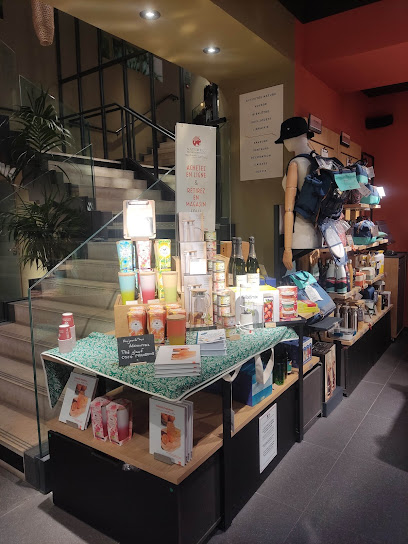
JOLIMUG
Explore JOLIMUG in Dijon for unique gifts that celebrate local craftsmanship and the essence of Burgundy's rich culture.

Orange
Discover the Orange Cell Phone Store in Dijon - your one-stop shop for mobile devices, accessories, and expert repairs in a vibrant city atmosphere.

C'est 2 Euros
Discover unbeatable deals at C'est 2 Euros, the premier discount store in Dijon, where shopping meets affordability.

Flying Tiger Copenhagen Dijon
Explore the vibrant and playful world of Flying Tiger Copenhagen in Dijon, where unique gifts and fun finds await every visitor.

Le Comptoir Irlandais Dijon
Explore Le Comptoir Irlandais in Dijon for a unique shopping experience filled with Irish culture, gourmet foods, and exquisite gifts.

Chapellerie Bruyas
Explore the exquisite craftsmanship at Chapellerie Bruyas, Dijon’s premier hat shop offering unique styles for every occasion.

L'Échoppe Magique
Explore L'Échoppe Magique in Dijon for unique local crafts and souvenirs that capture the spirit of your travels.
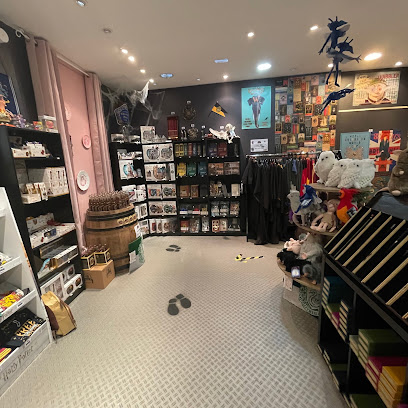
Counter Japan
Explore authentic Japanese culture at Counter Japan in Dijon, offering unique gifts and traditional crafts that celebrate Japan's rich heritage.

Boutique Vedrenne Dijon
Explore Boutique Vedrenne Dijon for a curated selection of Burgundy wines and spirits, capturing the essence of French culture in every bottle.

Essential bars & hidden hideouts
Monsieur Moutarde
Experience the vibrant nightlife of Dijon at Monsieur Moutarde, where exquisite cocktails and a chic atmosphere await.

Pub Mac Callaghan
Discover the vibrant atmosphere of Pub Mac Callaghan in Dijon, where delicious food and drinks meet local culture and charm.
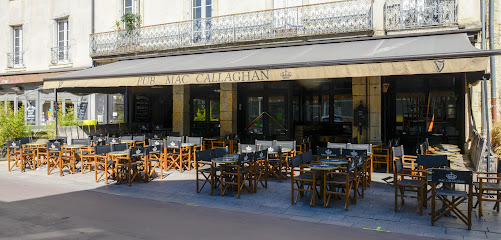
Les Berthom
Experience the vibrant ambiance and local flavors of Les Berthom, a top bar destination in the heart of Dijon, France.

L'Antre II Mondes
L'Antre II Mondes in Dijon: A vibrant bar and brasserie offering a taste of local culture through exquisite drinks and delightful cuisine.

Le Cercle Rhumerie Jamaïque
Discover the vibrant nightlife at Le Cercle Rhumerie Jamaïque, where rum and music create an unforgettable atmosphere in the heart of Dijon.

Barberousse Dijon
Discover the vibrant spirit of Dijon at Barberousse, where expertly crafted cocktails meet a lively atmosphere for an unforgettable night out.
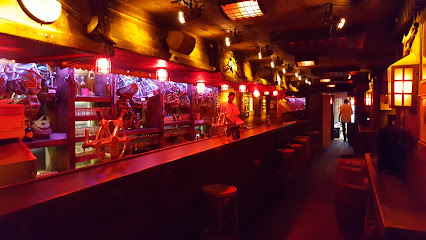
Dr. Wine
Discover the best of French cuisine and an exceptional wine selection at Dr. Wine in Dijon, the perfect spot for wine lovers and food enthusiasts.

The Barbarian's Pub
Experience the authentic taste of Ireland at The Barbarian's Pub in Dijon, where hearty meals and a vibrant atmosphere await every visitor.

The Blue Dog
Discover the vibrant nightlife at The Blue Dog in Dijon, where unique cocktails and a lively atmosphere await every visitor.

The CRAFT BEER PUB
Discover the vibrant craft beer scene at The CRAFT BEER PUB in Dijon, where local flavors and a lively atmosphere await every visitor.

L'Enivré cocktail bar
Experience the vibrant nightlife of Dijon at L'Enivré cocktail bar, where artisanal cocktails meet a stylish atmosphere to unwind and socialize.

L'Archipel Cocktail Bar
Discover the elegance of L'Archipel Cocktail Bar in Dijon, where artisanal cocktails and a chic atmosphere create an unforgettable evening.

Caveau de la Chouette
Discover the charm of Caveau de la Chouette, a delightful wine bar in Dijon offering exquisite wines, creative cocktails, and a cozy atmosphere.

BamJam
Experience the vibrant ambiance of BamJam, Dijon’s top live music bar, where great drinks and unforgettable performances await every night.

Au Vieux Leon
Discover the authentic atmosphere at Au Vieux Leon, a charming bar in Dijon, serving local drinks in a friendly environment.

Local Phrases
-
- HelloBonjour
[bon-zhoor] - GoodbyeAu revoir
[oh ruh-vwahr] - YesOui
[wee] - NoNon
[nohn] - Please/You're welcomeS'il vous plaît / De rien
[seel voo pleh / duh ryen] - Thank youMerci
[mehr-see] - Excuse me/SorryExcusez-moi / Désolé
[ex-kew-zay mwah / day-zoh-lay] - How are you?Comment ça va?
[koh-mohn sah vah] - Fine. And you?Bien. Et toi?
[byen. ay twah] - Do you speak English?Parlez-vous anglais?
[par-lay voo ahn-glay] - I don't understandJe ne comprends pas
[zhuh nuh kohm-prahnd pah]
- HelloBonjour
-
- I'd like to see the menu, pleaseJe voudrais voir la carte, s'il vous plaît
[zhuh voo-dray vwahr lah kart, seel voo pleh] - I don't eat meatJe ne mange pas de viande
[zhuh nuh mahnj pah duh vee-and] - Cheers!Santé!
[san-tay] - I would like to pay, pleaseJe voudrais payer, s'il vous plaît
[zhuh voo-dray pay-ay, seel voo pleh]
- I'd like to see the menu, pleaseJe voudrais voir la carte, s'il vous plaît
-
- Help!À l'aide!
[ah leed] - Go away!Allez-vous en!
[ah-lay voo zahn] - Call the Police!Appelez la police!
[ah-peh-lay lah poh-lees] - Call a doctor!Appelez un médecin!
[ah-peh-lay uh meh-deh-sahn] - I'm lostJe suis perdu
[zhuh swee pair-doo] - I'm illJe suis malade
[zhuh swee mah-lahd]
- Help!À l'aide!
-
- I'd like to buy...Je voudrais acheter...
[zhuh voo-dray ah-shet-ay] - I'm just lookingJe regarde juste
[zhuh ruh-gard zhust] - How much is it?Combien ça coûte?
[kohm-byen sah koot] - That's too expensiveC'est trop cher
[say troh shehr] - Can you lower the price?Pouvez-vous baisser le prix?
[poo-veh voo beh-say luh pree]
- I'd like to buy...Je voudrais acheter...
-
- What time is it?Quelle heure est-il?
[kell uhr ay-teel] - It's one o'clockIl est une heure
[eel ay twn uhr] - Half past (10)Dix heures et demie
[deez uhr ay dehm-yuh] - MorningMatin
[mah-tan] - AfternoonAprès-midi
[ah-preh mee-dee] - EveningSoir
[swahr] - YesterdayHier
[ee-ehr] - TodayAujourd'hui
[oh-zhoor-dwee] - TomorrowDemain
[deh-mahn] - 1Un
[uhn] - 2Deux
[duh] - 3Trois
[twah] - 4Quatre
[kah-truh] - 5Cinq
[sank] - 6Six
[sees] - 7Sept
[seht] - 8Huit
[wheet] - 9Neuf
[nuf] - 10Dix
[dees]
- What time is it?Quelle heure est-il?
-
- Where's a/the...?Où est...?
[oo ay] - What's the address?Quelle est l'adresse?
[kell ay la-dress] - Can you show me (on the map)?Pouvez-vous me montrer (sur la carte)?
[poo-veh voo muh mohn-tray (soor lah kart)] - When's the next (bus)?Quand est le prochain (bus)?
[kahn ay luh proh-shahn (boos)] - A ticket (to ....)Un billet (pour ....)
[uhn bee-yay (poor)]
- Where's a/the...?Où est...?
History of Dijon
-
Dijon's origins trace back to the Roman era when it was known as Divio. Located at the crossroads of several trade routes, it served as a significant settlement in the region of Gallia Belgica. The town's strategic location fostered its growth and prosperity from its earliest days.
-
During the 14th and 15th centuries, Dijon became the capital of the Duchy of Burgundy. Under the rule of powerful dukes like Philip the Bold and Charles the Bold, the city flourished economically and culturally. This period saw the construction of many of Dijon's most iconic buildings, including the Palais des Ducs, and the city became a center for art, music, and learning.
-
Dijon is renowned for its well-preserved medieval architecture. One of the city's most famous landmarks is the Church of Notre-Dame, which features the iconic 'Owl of Dijon'. This small carving is believed to bring good luck to those who touch it with their left hand while making a wish. The owl has since become a symbol of the city.
-
The French Revolution significantly impacted Dijon, as it did many other cities in France. The abolition of the feudal system and the subsequent administrative reorganization saw Dijon become the capital of the newly established Côte-d'Or département. The city's historical buildings also faced threats during this tumultuous period, but many were preserved thanks to local efforts.
-
Dijon is at the heart of the Burgundy wine region, known for producing some of the world's finest wines. The city's gastronomic heritage is equally prestigious, with mustard, pain d'épices (spiced bread), and crème de cassis (blackcurrant liqueur) being some of its most famous products. The annual International and Gastronomic Fair of Dijon is one of the most important events celebrating culinary arts in France.
-
In the 20th and 21st centuries, Dijon has continued to evolve while preserving its rich historical heritage. The city has invested in modern infrastructure, including the development of a tram system and the renovation of public spaces, to enhance the quality of life for its residents and visitors. Dijon's blend of history and modernity makes it a unique and vibrant destination.
Dijon Essentials
-
Dijon is well-connected to major cities in France and Europe. The nearest international airport is Lyon-Saint Exupéry Airport, approximately 200 kilometers away. From Lyon, you can take a direct high-speed TGV train to Dijon, which takes about 1.5 hours. Alternatively, Paris Charles de Gaulle Airport is another option, and from Paris, you can reach Dijon via TGV in around 1.5 hours as well. For those preferring to drive, Dijon is accessible via the A6 motorway from Paris or the A31 from Lyon.
-
Dijon has an efficient public transportation system, including buses and trams operated by Divia. Tickets can be purchased at kiosks and stations, and day passes are available. For shorter distances, walking and cycling are popular options, and bike rentals are readily available. Taxis and ride-sharing services like Uber are also accessible. Additionally, renting a car can be a convenient way to explore the surrounding Burgundy region.
-
The official currency in France is the Euro (EUR). Credit and debit cards are widely accepted in hotels, restaurants, and shops. ATMs are plentiful throughout Dijon for cash withdrawals. It's advisable to carry some cash for smaller establishments or markets that may not accept cards. Contactless payments and mobile wallets like Apple Pay and Google Pay are also increasingly popular.
-
Dijon is generally a safe city for tourists. However, as with any travel destination, it's important to stay vigilant. Avoid poorly lit areas at night and be cautious in crowded places to prevent pickpocketing. Areas around the train station and some parts of the city center can be prone to petty theft, so keep an eye on your belongings. It's advisable to use hotel safes for valuables and travel with copies of important documents.
-
In case of an emergency, dial 112 for immediate assistance, which works across the European Union. Dijon has several hospitals and clinics, including the Centre Hospitalier Universitaire (CHU) de Dijon for medical emergencies. Pharmacies are available for minor health issues. It's recommended to have travel insurance that covers medical emergencies. Police stations are also present throughout the city for any security concerns.
-
Fashion: Do dress smartly and stylishly, as locals appreciate good fashion sense. Avoid overly casual attire in finer restaurants. Religion: Do respect religious customs, especially when visiting churches. Dress modestly and avoid loud behavior. Public Transport: Do validate your ticket before boarding. Don't eat or drink on public transport. Greetings: Do greet people with 'Bonjour' (Good day) and say 'Merci' (Thank you) as a sign of politeness. Eating & Drinking: Do try local specialties like Dijon mustard and Burgundy wine. Don't rush through meals; dining is a leisurely affair.
-
To experience Dijon like a local, visit the Les Halles Market in the city center for fresh produce and regional delicacies. Take a stroll through the historic district and admire the half-timbered houses and medieval architecture. Engage with locals at wine bars and bistros to learn about the rich culinary heritage. Don't miss the opportunity to explore nearby vineyards and participate in wine tastings. For a unique experience, follow the Owl's Trail, a self-guided tour that highlights the city's major attractions.
Trending Landmark in Dijon
-
Darcy Garden
-
Museum of Fine Arts Dijon
-
Dijon central indoor market hall
-
Arquebuse Botanical Garden
-
Darcy square
-
Cathédrale Saint-Bénigne de Dijon
-
Liberation Square
-
Palais des Ducs et des États de Bourgogne
-
Grand Hôtel La Cloche Dijon - MGallery
-
The Owl of Dijon
-
Museum of Burgundian Life
-
Church of Our Lady
-
Palais des Sports de Dijon
-
William Gate
-
Natural History Museum
Nearby Cities to Dijon
-
Things To Do in Geneva
-
Things To Do in Lausanne
-
Things To Do in Vevey
-
Things To Do in Montreux
-
Things To Do in Lyon
-
Things To Do in Nancy
-
Things To Do in Annecy
-
Things To Do in Bern
-
Things To Do in Colmar
-
Things To Do in Basel
-
Things To Do in Thun
-
Things To Do in Freiburg
-
Things To Do in Interlaken
-
Things To Do in Reims
-
Things To Do in Murren
















